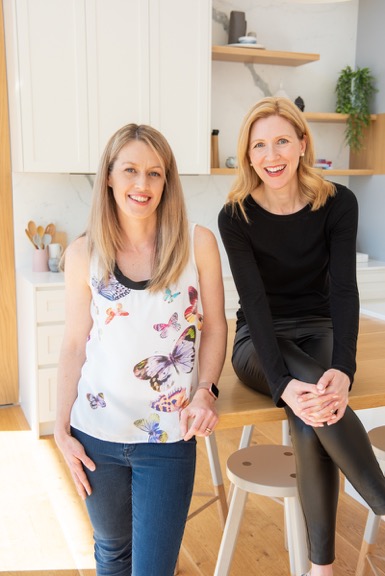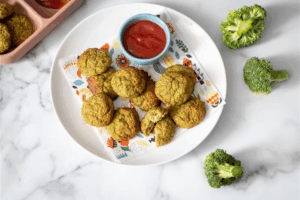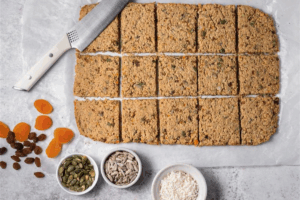Hey, sugar!
Just how much sugar is too much for little teeth and tummies, and where is it hiding?
By Bloom Nutrition Studio
Julia Boase and Angela Stradwick, Accredited Practicing Dietitians
Sugar can be a divisive little word for parents. For some, the thought of a little sugar sparks joy, sprinkling love into baked goods packed off into lunch boxes around the country. Where others go into combat mode, with a zero-tolerance approach to the sweet stuff.
So just where should we sit in the debate on how much sugar is the right amount for our kids?
What exactly is sugar?
Typically, we think of dietary sugar as those little white grains of table sugar. But technically speaking this is actually sucrose, a simple carbohydrate made up of glucose and fructose. In Australia, this is usually made from sugar cane.
There are many different naturally occurring sugars found in our food supply, like fructose from fruits, vegetables and syrups, and lactose in milk. Our digestive system also breaks down more complex carbohydrates from starches to form sugars within our body.
All of these different types of sugar are a fuel source for all the amazing things we do – like growth and development in childhood, and physical activity in all stages of life.
Where is it?
For Australians, naturally occurring sugars come mostly from fruit, vegetables, honey and dairy products, but these aren’t the real issue. Not only are they travelling companions with a host of dietary good stuff – think fibre, prebiotics, probiotics, vitamins and minerals – they also don’t make up the bulk of our sugar intake.
The majority of our excess sugar intake comes from added ‘free sugars’, in high calorie, low nutrient foods and drinks – soft drinks, flavoured waters, sweetened fruit juices, as well as commercially made cakes, biscuits and pastries.
And while more than half of us eat over the recommended amount, the highest consumers of free sugars are our teenage boys.
What’s wrong with too much?
When our intake exceeds our energy needs, too much sugar can be a risk factor for excess weight gain. Even when growth and activity levels are on track, having too many sugary foods leaves less room in the diet for the healthy nourishing foods and drinks our bodies need to stay well and be at our best.
And then there are teeth. Bacteria in our mouth break down sugar and convert it to acid that causes tooth decay. Food and drinks that are consumed slowly or regularly throughout the day or those that stick to teeth are the worst. Soft drinks and sweets, we’re looking at you.
How much should we be having?
To lower the risk of excess weight gain and tooth decay, the World Health Organisation says to limit our intake of free sugars to no more than 10% of energy each day. Exact amounts will vary, but this equals a limit of about 6-8 teaspoons for toddlers and preschoolers, 8-10 teaspoons for primary schoolers, 12-14 teaspoons for teenage girls, and 15-18 teaspoons for teenage boys.
Calculating your child’s actual sugar intake is a tricky business! So at home, rather than focus on how much sugar your child is currently having, just try cutting back on free sugars where you can. When they are eating sugar, try to ensure it’s mostly in foods that also deliver a range of other nutrients.
Fill up lunch boxes and family meals with choices based on real foods – vibrant veggies, fruits, whole grains, lean proteins and dairy. It’s ok to include a little sugar in our home cooking when the good stuff makes up the bulk of your food.
Cut down on processed and packaged snacks. Most store-bought snacks have a surprising amount of sugar added. Make your own and experiment with gradually reducing the sugar in your favourite recipes.
Sweetened drinks are best avoided, so don’t offer soft drinks or cordials (1 can of Coca-Cola contains 10 teaspoons of added sugar!). If you choose fruit juice, keep it to no more than 1/2 a cup per day, and only buy unsweetened 100% juice varieties. Limit sweetened milk drinks, instead choosing plain milk or sweeten with fruit, smoothie style.
Avoid sugary breakfast cereals and choose wholegrain “plain” varieties, like rolled oats, Weet-bix and shredded wheat biscuits.
Keep occasional or party foods as just that, occasional. Avoid letting them creep into lunch boxes, or become regular pantry items.
Read labels on the food you buy. Ingredients have to be listed from most to least, if sugar is high up on the list you probably want to avoid it.
And don’t forget to brush those little pearly whites!
Oh, and date sugar, rice malt syrup, coconut sugar, palm sugar… while they have a little less refinement and a little more nutrients, yep, you guessed it – they’re still sugar.
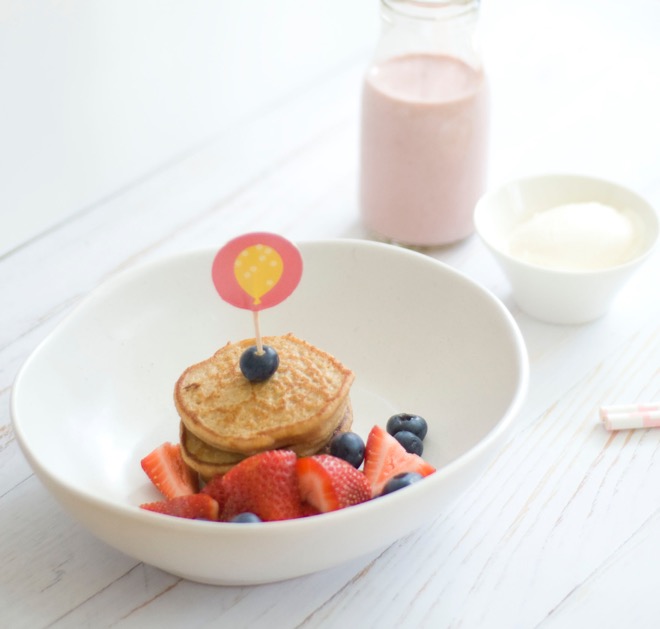
Banana Oat Pikelets
Ingredients:
1 banana
1 cup of rolled oats
1 teaspoon of baking powder
1/2 cup greek yoghurt
1 egg
1/2 teaspoon of cinnamon
Method:
Put all ingredients into your blender (I used a high speed nutri-bullet). Blitz until smooth. Place a frying pan on medium / low heat and melt a small amount of butter. Pour mixture into pan in “pikelet size”. Cook for about 1- 2 minutes or until the underside is starting to turn golden brown. Flip over and cook on the other side for another 30 seconds.
Suitable for freezing.
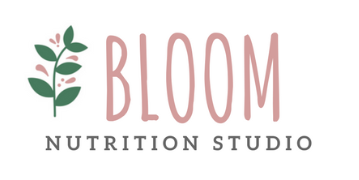
Angela and Julia are Accredited Practicing Dietitians. Between them they have 8 children, and over 30 years experience years of experience helping women, children and families to eat well.
Visit them at bloomnutritionstudio.com.au
or @bloomnutritionstudio to find out more.
